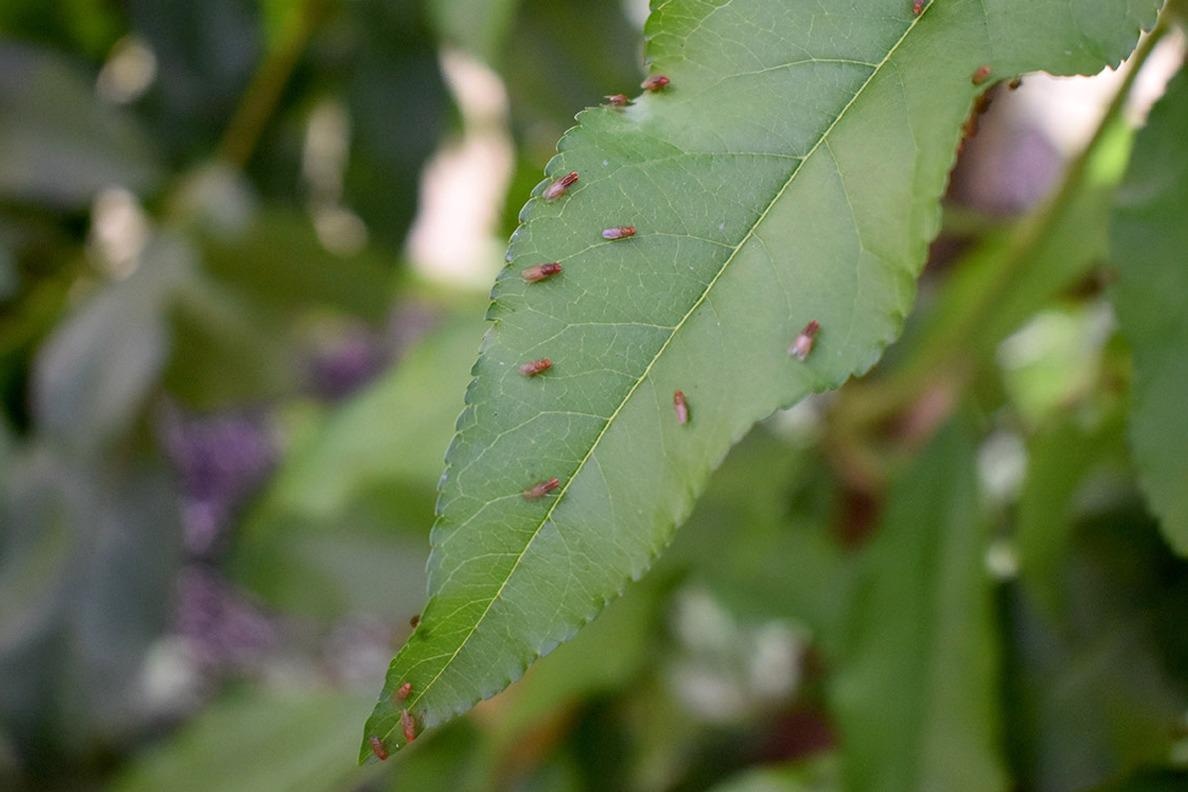Feb 23 2021
Biodiversity loss caused by climate change is an ever-increasing concern globally. Another significant factor inducing biodiversity loss is the establishment of invasive species, which usually dislodge native species.
 Invasive and naturalized fruit fly species on a peach tree inside the experiment. Image Credit: Washington State University.
Invasive and naturalized fruit fly species on a peach tree inside the experiment. Image Credit: Washington State University.
A new study has demonstrated that species have the potential to adapt quickly to an invader and that this evolutionary change could have an impact on how they handle a harsh climate.
Our results demonstrate that interactions with competitors, including invasive species, can shape a species’ evolution in response to climatic change.
Seth Rudman, Study Co-Author and Adjunct Professor, Washington State University Vancouver
Rudman will join the faculty as an assistant professor of biological sciences in fall 2021.
The findings of the study were reported in a paper titled “Competitive history shapes rapid evolution in a seasonal climate,” published in the Proceedings of the National Academy of Sciences.
Researchers have identified more and more that evolution is not essentially gradual and usually takes place very fast to be noted in real-time. These quick evolutionary changes can have significant impacts on things such as the persistence of species and reactions to climatic change.
The investigators opted to analyze this topic in fruit flies, which could reproduce fast, thereby enabling change to be noted over many generations in just a few months.
The researchers concentrated on two species: one naturalized in North American orchards (Drosophila melanogaster) and the other one that recently began to invade North America (Zaprionus indianus).
Initially, the experiment tested if the naturalized species can evolve quickly in response to exposure to the invasive species over the summer.
They further tested how adaptation in the summer impacts the potential of the naturalized species to tackle and adapt to the colder fall conditions.
A cool thing about the way we conducted this study is that while most experiments that look at rapid evolution use controlled lab systems, we used an outdoor experimental orchard that mimics the natural habitat of our focal species. This gives our experiment a sense of realism and makes our findings more applicable to understanding natural systems.
Tess Grainger, Study Lead Author, Biodiversity Centre, University of British Columbia
Within a period of just a few months, the naturalized species adapted to the occurrence of the invasive species. Then, this quick evolution influenced how the flies evolved when hit by the cold weather.
Flies exposed to the invasive species earlier evolved in the fall to be huge, lay fewer eggs, and develop quicker compared to the flies that had never been exposed.
The research marks the start of a study that may eventually apply to other endangered species that are harder to study.
In the era of global environmental change in which species are increasingly faced with new climates and new competitors, these dynamics are becoming essential to understand and predict.
Tess Grainger, Study Lead Author, Biodiversity Centre, University of British Columbia
Rudman outlined the next big question: “As biodiversity changes, as climate changes and invaders become more common, what can rapid evolution do to affect outcomes of those things over the next century or two? It may be that rapid evolution will help biodiversity be maintained in the face of these changes.”
Besides Rudman and Grainger, the co-authors of the study include Jonathan M. Levine, Ecology and Evolutionary Biology Department, Princeton University (where Grainger was a postdoctoral fellow); and Paul Schmidt, Department of Biology, the University of Pennsylvania (where Rudman was a postdoctoral fellow). The study was carried out in an outdoor field site next to the University of Pennsylvania.
Journal Reference:
Grainger, T. N., et al. (2020) Competitive history shapes rapid evolution in a seasonal climate. Proceedings of the National Academy of Sciences. doi.org/10.1073/pnas.2015772118.